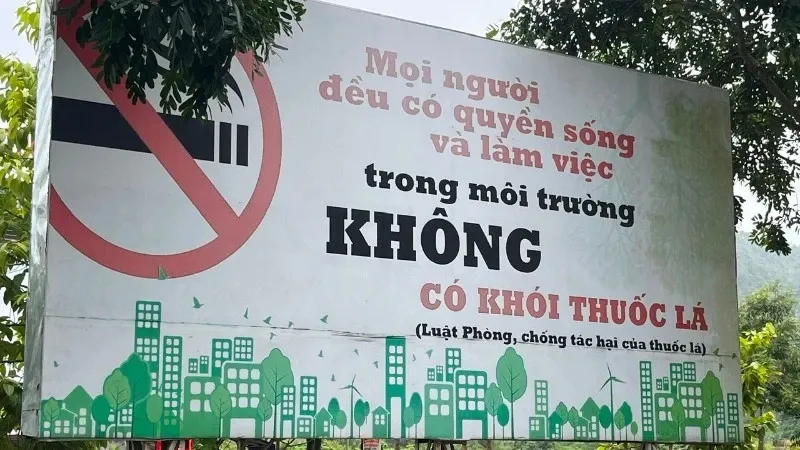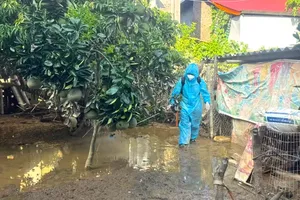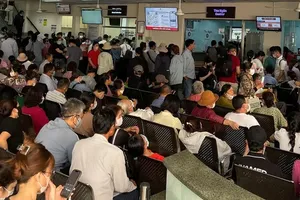Despite significant efforts and some initial results in tobacco harm prevention, Vietnam remains among the 15 countries with the highest rates of adult male smokers in the world.

Smoking is not only one of the leading causes of death but also a major source of environmental pollution.
Research shows that cigarette smoke contains more than 7,000 chemicals, including over 69 carcinogens. These substances can inflame and mutate cells, leading to chronic diseases and cancer.
In Vietnam, 25 diseases are linked to tobacco use, such as stroke, coronary artery disease, chronic obstructive pulmonary disease (COPD), and lung cancer, which are among the country’s leading causes of death.
A study by the Vietnam National Cancer Hospital revealed that 96.8 percent of lung cancer patients had a history of smoking.
Tobacco smoke also harms non-smokers who are regularly exposed to it (passive smoking). These include spouses, children, family members, and colleagues of smokers. Passive smoking can cause severe diseases such as lung cancer, respiratory infections, and cardiovascular disorders. The risk of coronary artery disease among passive smokers is 25-30 percent higher than among those not exposed to smoke.
Pham Hong Quan, Strategic Adviser at the Center for Environmental Protection and Response to Climate Change, said the tobacco industry significantly impacts the planet’s environment. Each year, the global tobacco industry produces about 6 trillion cigarettes, generating approximately 840,000 tonnes of cigarette filter waste, the most common plastic litter worldwide.
These filters act as “toxic bombs”, releasing nicotine, cadmium, and arsenic into soil and water, harming ecosystems.
In Vietnam, with about 15 million smokers, cigarette waste amounts to thousands of tonnes annually, worsening the plastic pollution crisis. Additionally, around 4.5 million hectares of land are destroyed yearly for tobacco cultivation and wood for drying. The process also emits roughly 854 million tonnes of CO₂, equivalent to the annual emissions of a country like Finland.
Dr Nguyen Trong Khoa, Deputy Director of the Department of Medical Services Administration under the Ministry of Health, stressed the need for ministries and relevant agencies to review and improve mechanisms, policies, and laws on tobacco harm prevention.
He called for accelerating plans to raise tobacco taxes to meet the World Health Organisation’s recommendation that taxes should account for over 70 percent of retail prices by 2030.
He also proposed expanding smoke-free areas, strengthening inspections, and strictly enforcing penalties for violations. Public education and communication activities should be diversified and tailored to local contexts and target groups.
Quan further recommended that authorities develop strict regulations and sanctions against the sale, advertising, and use of tobacco products, particularly illegal e-cigarettes and heated tobacco. All forms of advertising, marketing, and sponsorship, especially on social media, should be banned.
He also suggested applying Extended Producer Responsibility (EPR), requiring tobacco companies to bear financial responsibility for collecting and processing cigarette filters they produce, in line with the 2020 Law on Environmental Protection.
Moreover, policies should support farmers in switching from tobacco to more sustainable crops, thereby reducing deforestation and emissions. Research on tobacco’s environmental impact and alternatives such as biodegradable filters should be encouraged.
Finally, successful “green zones,” smoke-free areas in schools, offices, and residential communities, should be replicated nationwide to build a healthier, cleaner environment.
























